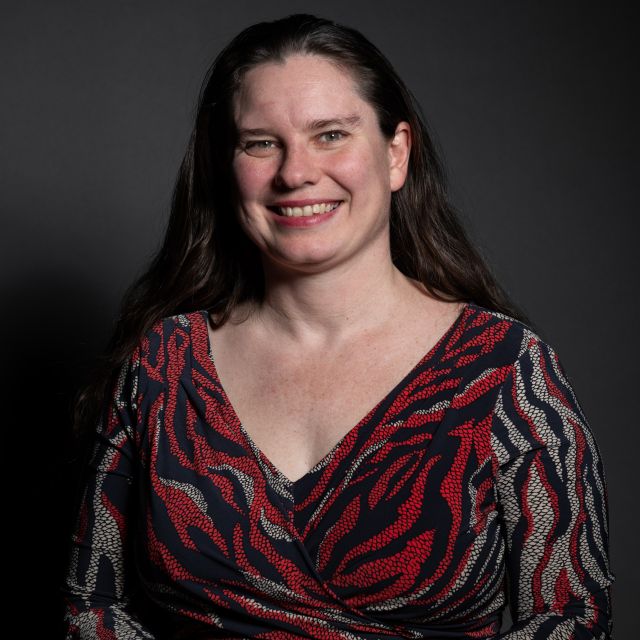Rosi Reed’s research is centered around studying one of the four fundamental forces of nature, the strong force, which is otherwise known as quantum-chromodynamics (QCD) via the collision of heavy ions, such as gold or lead, at nearly the speed of light. One of the most interesting things to have come out of this research is the formation of a new state of matter, called the quark gluon plasma (QGP), formed when the temperature of the system is above 2x1015 K. At this temperature the protons and neutrons melt into their constituent quarks and gluons. The QGP was given the label, "the perfect liquid", as it has the lowest viscosity over entropy ever measured, nearly at the theoretical minimum.
Her research goal is to answer the fundamental questions:
* How does subatomic matter organize itself and what phenomena emerge?
* Are the fundamental interactions that are basic to the structure of matter fully understood?
This research is currently being conducted at the Relativistic Heavy Ion Collider (RHIC), which is located at Brookhaven National Labs (BNL) on Long Island, New York. Rosi Reed belongs to two different collaborations at RHIC, the Solenoidal Tracker at RHIC (STAR), which is the only running experiment until 2023, and the sPHENIX experiment, which has built a next-generation detector at RHIC which will start taking data in 2023. The next generation collider, called the Electron Ion Collider (EIC) will be built in the RHIC ring starting in 2026. Rosi Reed belongs to the EPIC collaboration, which was formed around building the detector at the new Collider.
Her research at Lehigh can be divided into two components: hardware development and data analysis. She has been involved in the development of two different detectors: the Event Plane Detector (EPD) for STAR and the sPHENIX Event Plane Detector (sEPD). To answer fundamental questions about the nature of QCD she utilizes particle jets as probes to analyze the Quark Gluon Plasma (QGP). Particle jets are formed when a high momentum quark or gluon fragments into a column of particles, which hadronize and are measured by the detectors. When this parton travels through the QGP, it will lose energy to the medium in a process called jet quenching. The modification of the jets due to the medium depends on the details of the medium such as its temperature, the size of the fluctuations within it, and the geometry of the QGP droplet. By comparison with models and data from proton-proton collisions, the properties of QCD can be understood.


